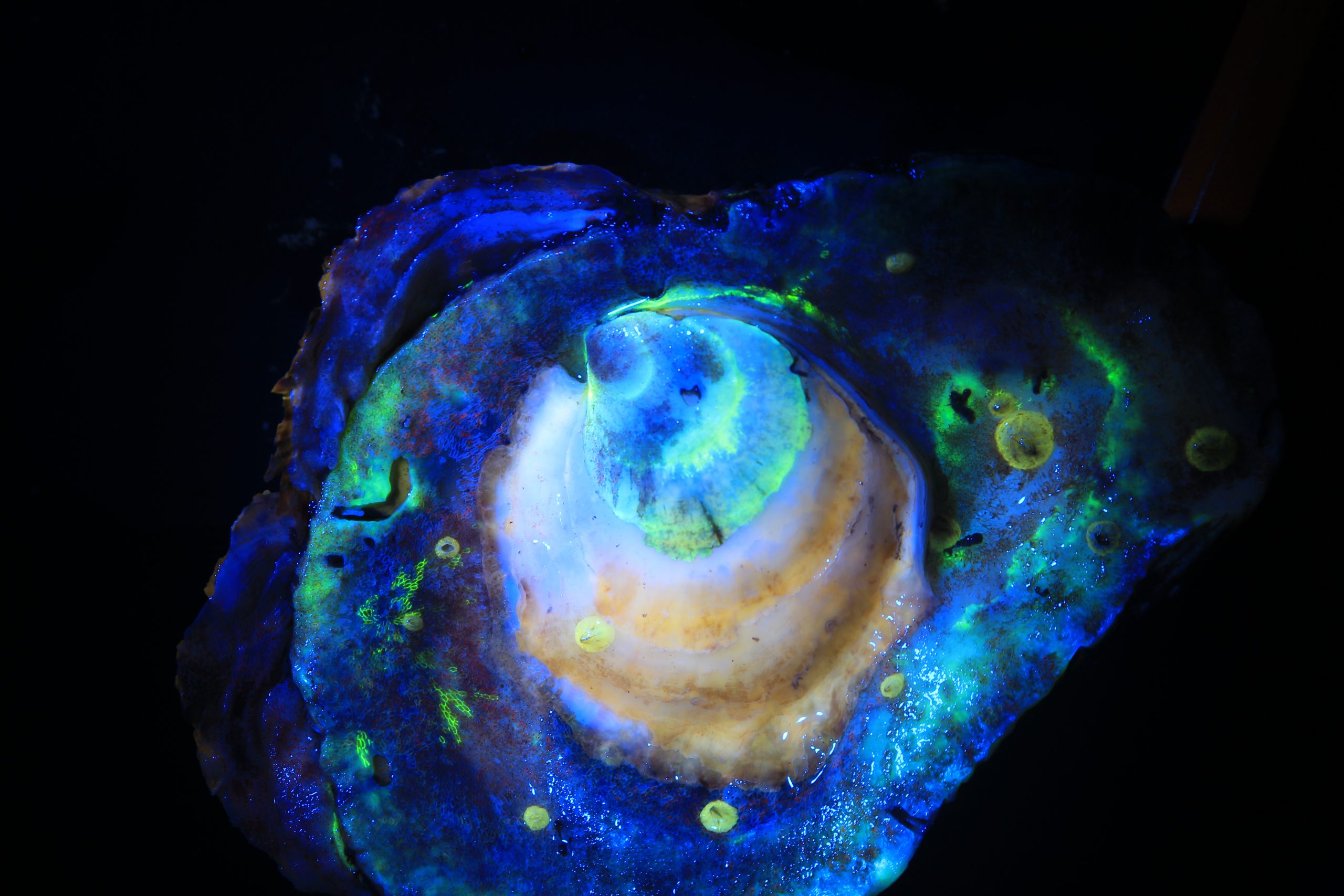We are testing the feasibility of “direct setting,” a new method for seeding oyster reefs. Traditional reef seeding in areas with low natural-recruitment uses hatchery-produced juvenile oysters attached to cultch (called “spat-on-shell”). Alternatively, the direct setting method allows oyster larvae to be released directly onto the reef. Our goal is to determine if direct setting is a viable and scalable method. If so, direct setting techniques could establish a new, cost-saving method for seeding oyster reefs in the aquaculture and restoration sectors.
Why We Care
Oysters are vital to the health of estuaries. Their filter feeding improves water quality. Their aggregation of shells creates nursery habitat for other organisms. And they provide people with seafood and livelihoods. Unfortunately, oyster populations around the globe have decreased roughly 85 percent since the 19th century.
In Chesapeake Bay, oyster habitat is now being restored at unprecedented levels. Concurrently, oyster aquaculture production in the bay and across the U.S. is increasing annually. In 2014, annual oyster aquaculture sales in the U.S. totaled $169 million. By 2016, annual sales totaled $192 million.
Traditional production of spat-on-shell (SOS) for oyster restoration and aquaculture requires the acquisition, cleaning, transport, storing, loading, and planting of large amounts of substrate. As the availability of the shell traditionally used in hatcheries decreases, costs continue to rise. If successful and scalable, our direct setting techniques would reduce the requirement for shell or other substrate, along with the associated logistical and material handling challenges and costs.
What We Are Doing
This NCCOS project is a cross–line office and inter-agency collaboration with the NOAA NMFS Restoration Center (Stephanie Westby); United States Naval Academy – Oceanography Department (Cecily Steppe) and the Maryland Department of Natural Resources Piney Point Aquaculture Center (James Dumhart). The research has two phases:
-
- Summer 2019 – 10 million calcein-marked late stage (“hot” pediveligers) larval oysters were deployed directly (Direct Setting) onto conditioned cultch (shell bags) via divers, in the Tred Avon River.
- Summer 2021 – Deploy a TBD number of unmarked late stage (“hot” pediveligers) oyster larvae onto an intact oyster reef in the Tred Avon River oyster sanctuary. In winter 2022, the reefs will be surveyed and sampled to quantify spat set.
Benefits of Our Work
We are testing an alternative to the primary oyster production method used in oyster restoration and aquaculture in Chesapeake Bay. If Direct Setting is deemed a viable oyster production alternative, it could reduce substantial bottlenecks associated with the acquisition of shell material, and accompanying costs of spat-on-shell production. By deploying larvae that are ready to settle directly onto suitable settlement material in situ, much of the material and handling requirements are reduced (shell acquisition, cleaning, transport, storing, loading, and planting of large amounts of substrate). Imagine dispersing an apple-sized ball of larvae across existing reefs rather than transporting and spreading a 3,000-gallon-tank’s worth of spat-on-shell over the same reef.

What We Have Learned
-
- The Summer 2019 deployment had ~1.0 percent of the larvae released settle as spat on the research reef (shell bags) when salinities were at normal levels for this region (Mid-Chesapeake Bay). Low salinities reduce larval set rates, and salinities were significantly below average during this first half of the Summer 2019 field season.
- All spat recovered showed the telltale calcein mark, meaning they were from the cohort of larvae released onto the site by researchers. There was no evidence of natural recruitment (unmarked spat).
- ~90 percent of all spat were found within 0.5 meters of the exact location where the larvae were deployed. Oyster larvae can be direct set in-situ without enclosures. This is the first verified instance that we are aware of.
- Marking oyster larvae with calcein definitively gives researchers a way to track larval origin.
- Spat densities immediately surrounding the larval deployment location (within 0.5 m) were comparable to those seen in hatchery-produced spat-on-shell (typically in the 10–15 spat per shell average).
Next Steps – Summer 2021
We are planning a larger scale deployment on an existing reef in the Tred Avon River Oyster Sanctuary. The objectives for the next phase of the project are:
-
- To test mechanisms to disperse larvae for more even spat sets from a vessel.
- Test methods to deploy larvae at a restoration scale.
